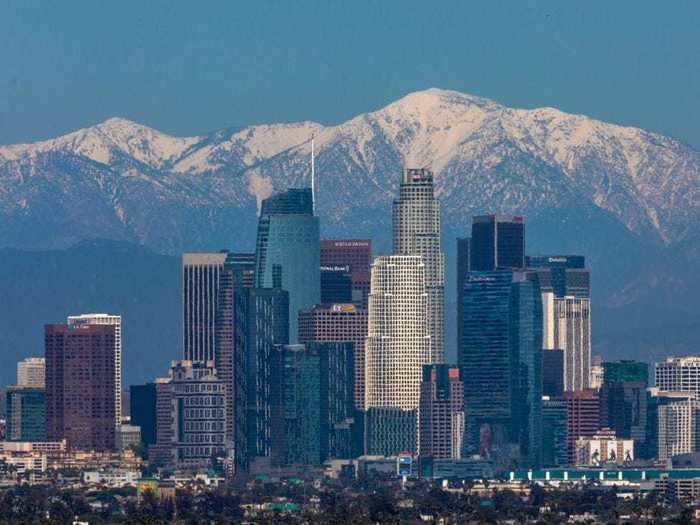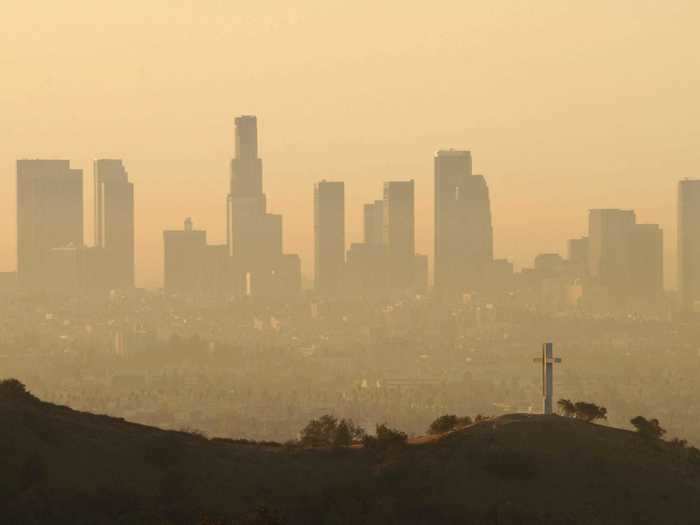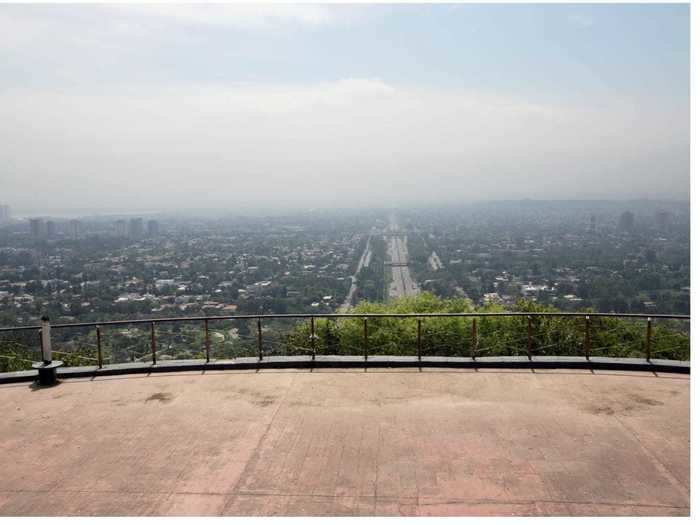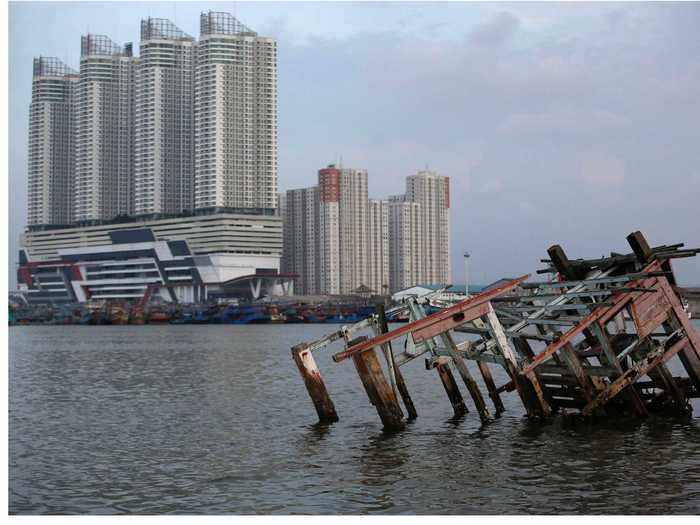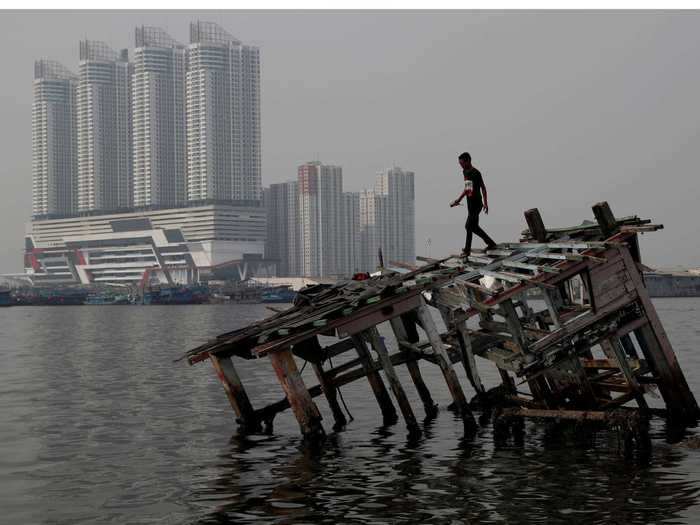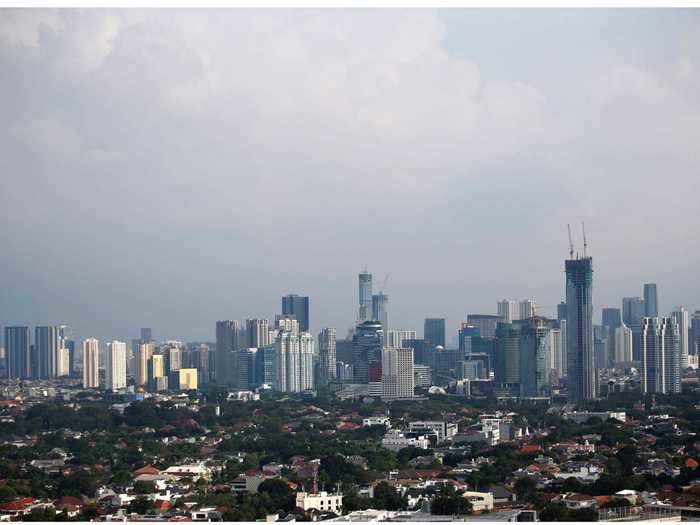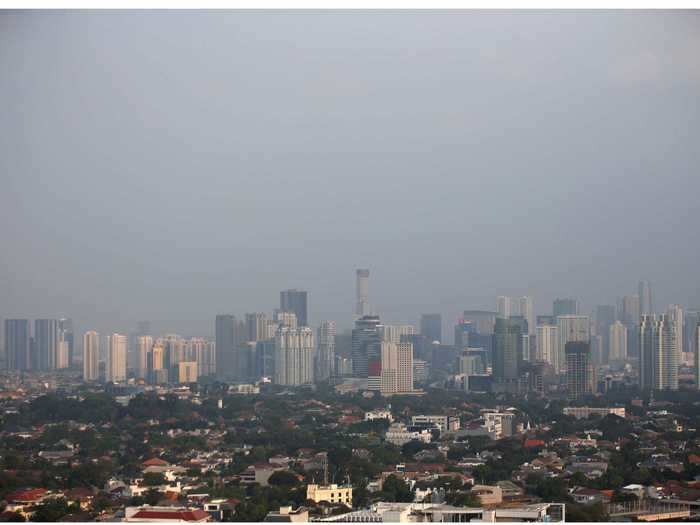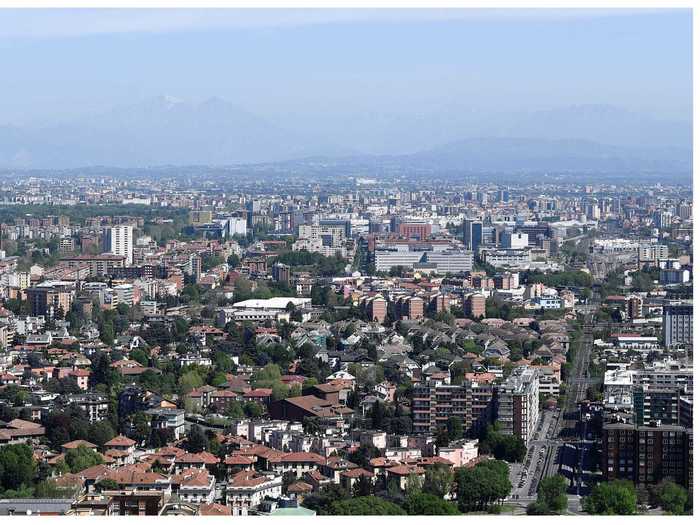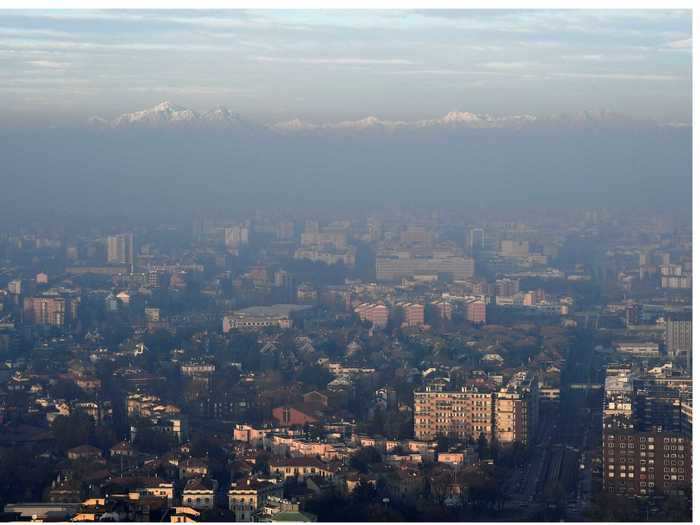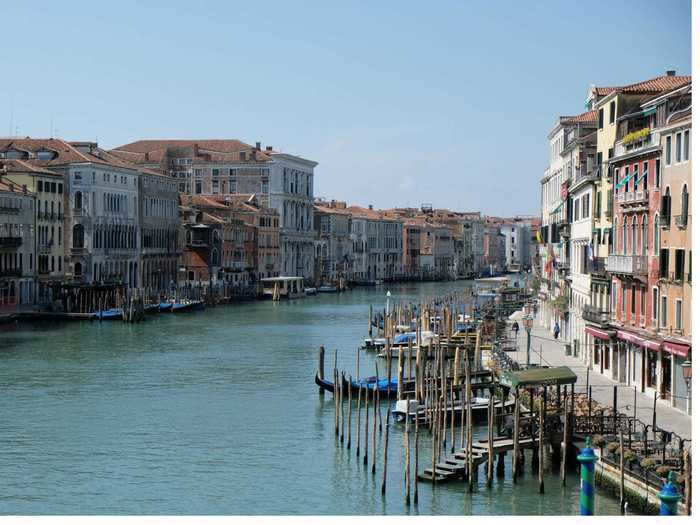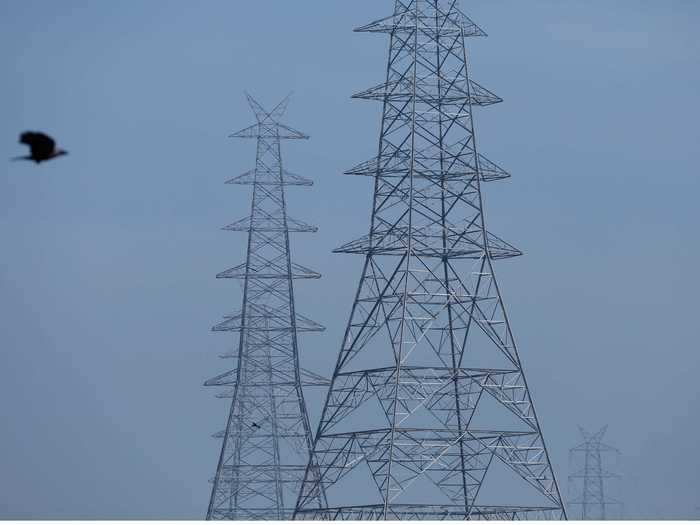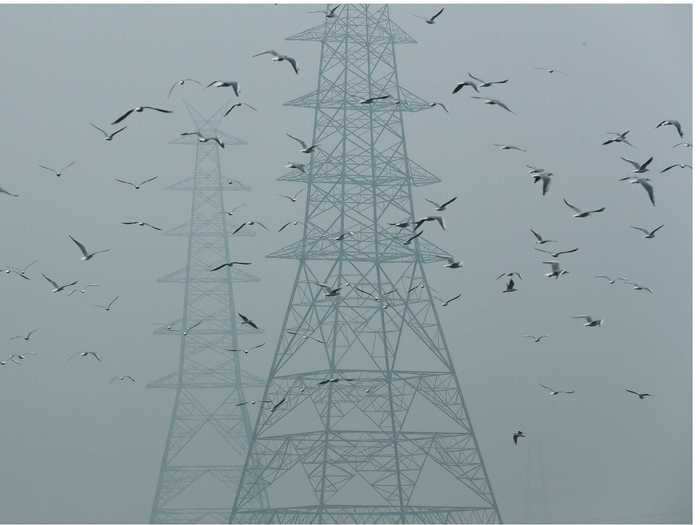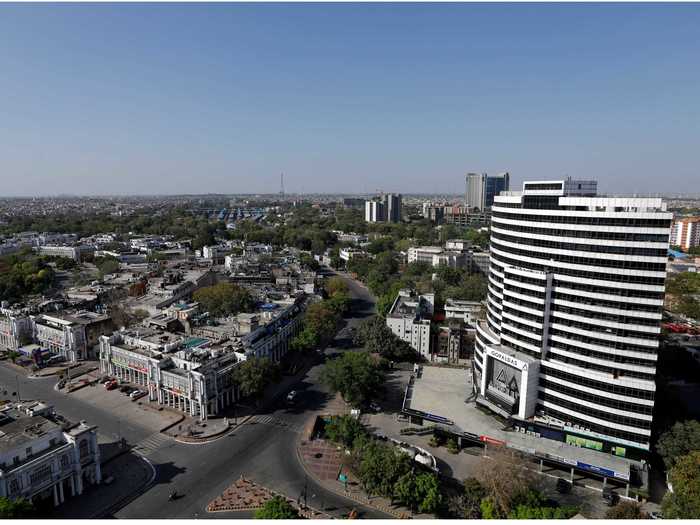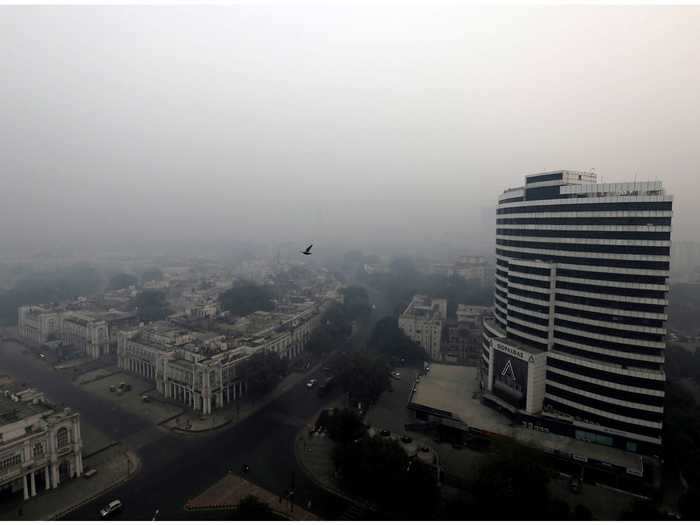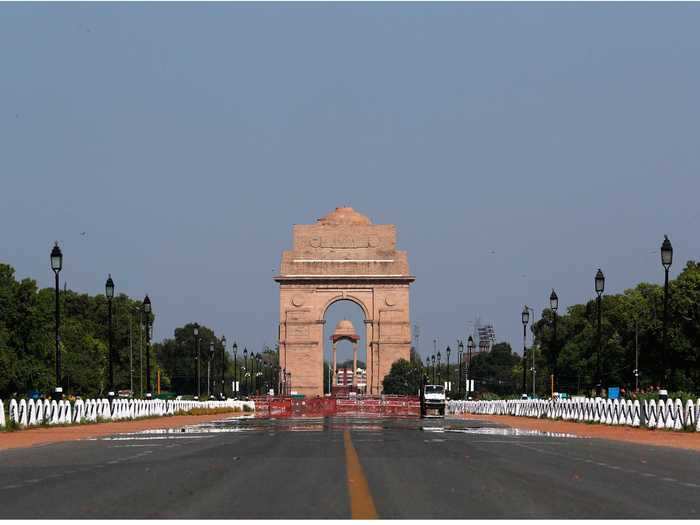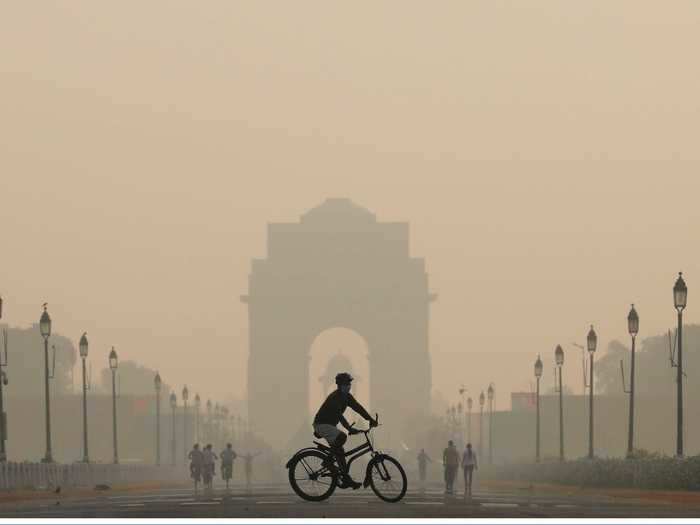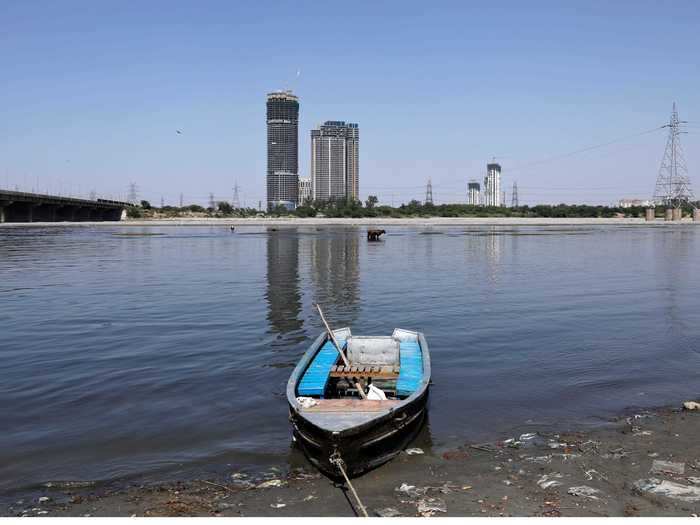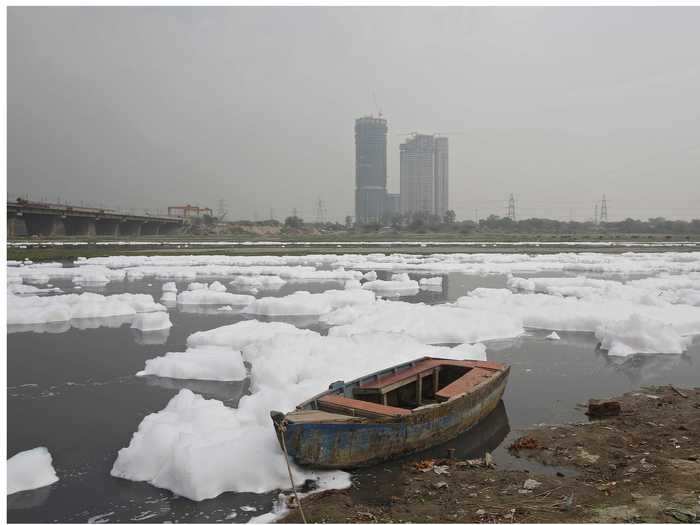Rows of gondolas sit in clear water in Venice's canals.REUTERS/Manuel Silvestri
- One-third of the world is under lockdown as a response to the coronavirus pandemic.
- Air traffic is down, fewer cars are on the road, and factories are closed; this means that air pollution has drastically decreased in many parts of the world.
- Milan, Italy, which has historically struggled with smog, is even thinking about ways to reduce air pollution post-pandemic by introducing a plan to reduce car use.
- Visit Insider's homepage for more stories.
As humans hunker down indoors, the natural world is positively thriving. Wild animals roam empty streets, and nature is reclaiming urban areas.
In some places, air pollution has noticeably reduced, with pollution levels in China down an estimated 25%.
This makes sense given that a third of the world's population is under lockdown, and 96% of global destinations have introduced travel restrictions. According to CNN, the TSA reports a 96% drop in air travel, while Allstate CEO Thomas Wilson told CNBC that driving is down between 35% to 50% in the US, depending on the state.
While the environment may be convalescing during the pandemic, experts don't think this will last. But, in the meantime, the short-term effects are pretty striking, as these before-and-after pictures show.
Read the original article on
Insider
AFTER: As a Business Insider article citing a CNN report points out, LA saw the most consecutive good air days in March than it has since at least 1995. However, whether this is lockdown related or due to factors such as recent storms is unclear, per Getty.
The San Gabriel Mountains are visible in Los Angeles, California, on April 14, 2020.
David McNew/Getty
BEFORE: Los Angeles is notorious for two things: smog and traffic.
The usual smog in Los Angeles, California.
David McNew/Getty Images
AFTER: Thanks to a lockdown-induced decrease in traffic, visibility has improved.
The view from the Daman-e-Koh viewing point in Islamabad, Pakistan, on April 20, 2020.
Faisal Mahmood/Saiyna Bashir/Reuters
BEFORE: A local publication reports that Islamabad's already poor air quality is worsening due to an increase in the number of cars, as well as steel mills.
The view from the Daman-e-Koh viewing point in Islamabad, Pakistan, on August 3, 2017.
Faisal Mahmood/Saiyna Bashir/Reuters
AFTER: Previously, blue skies in Jakarta were a sign of many of the city's residents leaving for the Eid al-Fitr holidays in June, ABC reports.
The wreckage of a wooden boat in North Jakarta, Indonesia, on April 16, 2020.
Willy Kurniawan/Reuters
BEFORE: Some days, Jakarta ranks as the world's smoggiest city, according to ABC.
The wreckage of a wooden boat in North Jakarta, Indonesia, on July 26, 2018.
Willy Kurniawan/Reuters
AFTER: According to the Jakarta Post, the Jakarta Environment Agency reported improved air quality after social restrictions were put in place in late March.
The skyline of Jakarta, Indonesia, on April 16, 2020.
Willy Kurniawan/Reuters
BEFORE: Jakarta's air pollution was so bad that The Guardian reports that a group of local activists decided to sue the Indonesian government to take action.
The skyline of Jakarta, Indonesia, on July 4, 2019.
Willy Kurniawan/Reuters
AFTER: Once traffic dropped during lockdown, so did air pollution. In response, Milan is thinking about introducing a plan to reduce car use after the pandemic to avoid a rebound, according to The Guardian.
A view of Milan, Italy, on April 17, 2020.
Flavio Lo Scalzo/Reuters
BEFORE: The BBC reports that Milan was named Europe's most polluted city in 2008, but that smog is still a problem today.
A view of Milan, Italy, on January 8, 2020.
Flavio Lo Scalzo/Reuters
AFTER: In March, photos emerged of the canals looking so clear that you could see to their bottom. However, the city's mayor told CNN that this was due to "less traffic on the canals, allowing the sediment to stay at the bottom."
The Grand Canal, Venice, Italy, on April 17, 2020.
Manuel Silvestri/Reuters
BEFORE: Venice, Italy's, high-traffic waterways were generally murky.
The Grand Canal, Venice, Italy, on January 6, 2018.
Manuel Silvestri/Reuters
AFTER: CNN reports much lower levels of both noxious microscopic particulate (PM 2.5) and of nitrogen dioxide post-lockdown. In New Delhi, the PM 2.5 went down by 71% in a single week.
Electricity pylons in New Delhi, India, April 13, 2020.
Adnan Abidi/Reuters
BEFORE: New Delhi's air is so polluted it can be seen from space, according to USA Today.
Electricity pylons in New Delhi, India, on October 30, 2019
Adnan Abidi/Reuters
AFTER: According to a previous Insider report, some parts of India saw the Himalayas for the first time in decades.
New Delhi, India, on April 8, 2020.
Anushree Fadnavis/Adnan Abidi/Reuters
BEFORE: When India imposed its 21-day lockdown, it encompassed 1.3 billion people, making it the world's largest lockdown, according to CNN.
New Delhi, India, on November 8, 2018.
Anushree Fadnavis/Adnan Abidi/Reuters
AFTER: According to Reuters, New Delhi is currently experiencing "the longest spell of clean air on record."
The India Gate war memorial in New Delhi, India, on April 8, 2020, after a 21-day nationwide lockdown.
Anushree Fadnavis/Adnan Abidi/Reuters
BEFORE: In 2019, CNN cited "dangerous levels of pollution" in New Delhi, describing India's capital as "shrouded" in "a toxic, throat-searing cloud of brown smog."
The India Gate war memorial in New Delhi, India, on October 17, 2019.
Anushree Fadnavis/Adnan Abidi/Reuters
AFTER: Delhi hasn't seen air this clear for decades. "I look at the sky quite often and enjoy its blueness from my balcony," a retired English professor told The New York Times.
New Delhi, India, as seen from the Yamuna River on April 8, 2020, after a 21-day nationwide lockdown.
Adnan Abidi/Reuters
BEFORE: According to The New York Times, India was home to 14 of the 20 cities with the most hazardous air in 2019.
New Delhi, India, as seen from the Yamuna River on March 21, 2018.
Adnan Abidi/Reuters

